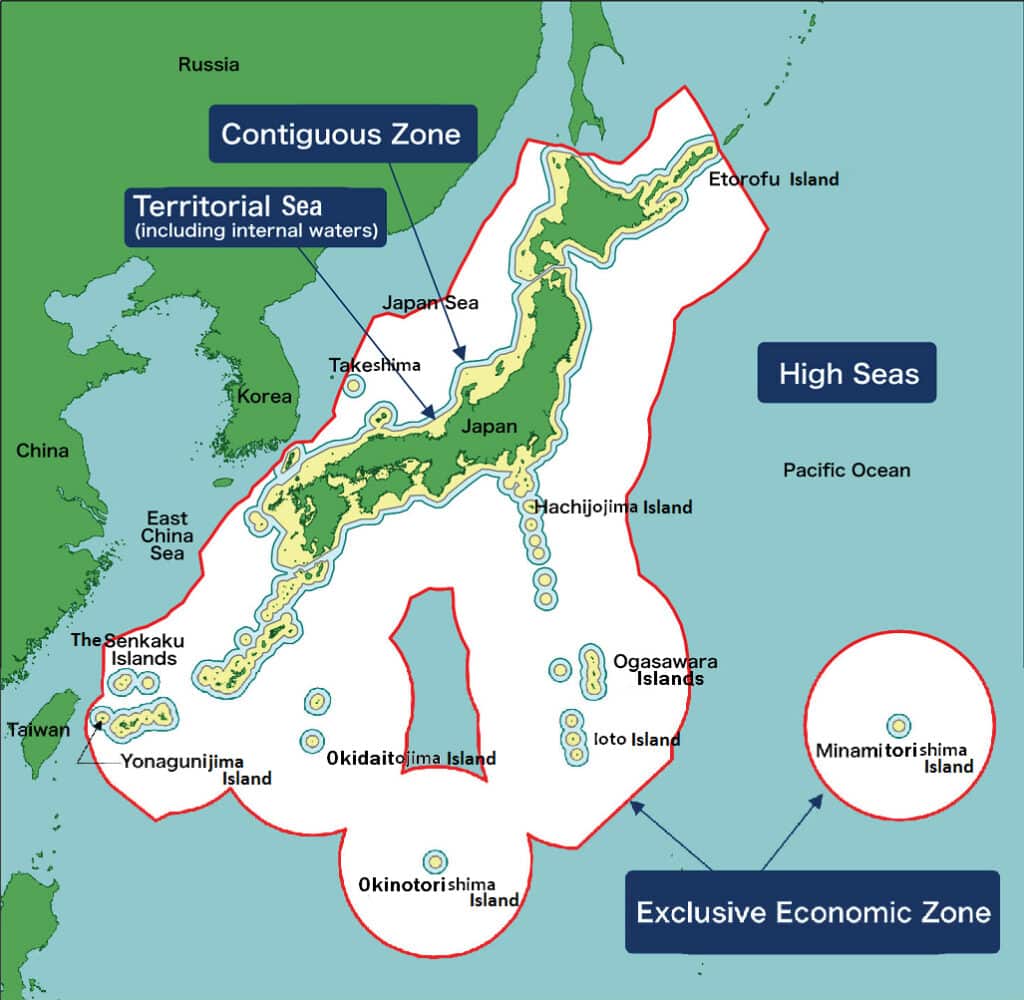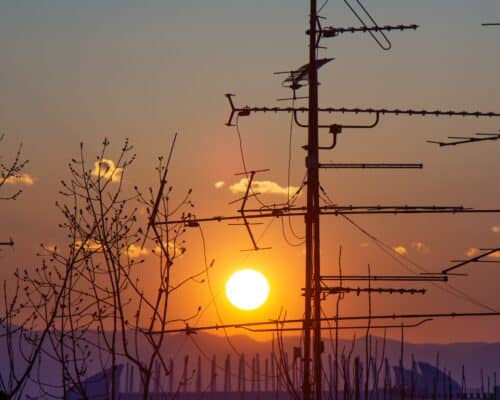Japan’s Offshore Wind Revolution
27 May 2024 – by Walter James
A vessel carrying a floating offshore wind tower nearly as tall as three Olympic-sized swimming pools floated off the coast of Goto City in southwest Japan’s Nagasaki Prefecture. Over the course of an hour and a half, the vessel released the 2,600-ton tower into the calm waters.
The 16.8 megawatt (MW) Goto City floating offshore wind farm was the first floating offshore wind farm to be built in Japan. For the country to reach its 2040 offshore wind target of up to 45 gigawatts (GW), it would need nearly 2,700 wind farms the size of Goto City’s. Until now, a myriad of hurdles made building that many offshore wind farms seem unlikely.

But now, a legislative amendment promises to open a vast marine area surrounding Japan for floating offshore wind development. By allowing wind farm construction in Japan’s exclusive economic zone (EEZ) — an area of the sea where a government can explore and use marine resources including wind energy production — the bill can push Japan’s clean energy transition forward by leaps and bounds. Not only that, it will stimulate Japan’s economic growth, aid its international manufacturing competitiveness and revive its rural areas struggling with a declining and ageing population.
Japan’s energy strategy has been criticised for its continued support of coal power, promoting flawed solutions of ammonia and hydrogen co-firing and persistent investments in fossil fuels. In the nation’s tattered approach to the clean energy transition, the government’s efforts to promote floating offshore wind deployment are good for the climate as well as its economy and population.
The Current State of Japan’s Offshore Wind Energy
Surrounded by windy oceans, Japan has tremendous offshore wind potential. By one estimate, that potential could add up to 552 gigawatts (GW) in generation capacity, exceeding all of Japan’s electricity generation capacity today.
So far, most of that’s wasted. In 2023, Japan’s total operating offshore and semi-offshore wind capacity was 187.7 megawatts (MW), or a meagre 0.03% of its 552 GW potential. It’s also 0.6% of China’s offshore wind capacity, 1% of the UK’s and 13% of Taiwan’s, according to 2022 data from the Global Wind Energy Council.
Recognizing the gap between reality and potential, the government convened a council of experts from the public and private sectors. In late 2020, this council set offshore wind targets of up to 10 GW by 2030 and up to 45 GW by 2040. Since then, both the national and prefectural governments have been implementing reforms to help along the construction of offshore wind farms around the country.
Legislative amendments are being considered that would allow the use of the country’s EEZ for floating offshore wind development.
Opening Up the EEZ
In March this year, Prime Minister Kishida’s government approved amendments to the act regarding the utilisation of marine areas. The original law was a standardised regulation allowing wind energy developers to use public sea areas outside port districts. The recent amendments would allow floating offshore wind development in Japan’s EEZ. This legislation is now being discussed and is expected to be passed into law by June.
The amendments will authorise the Japanese Ministry of Economy, Trade and Industry (METI) to survey and designate areas in the EEZ as promotion zones for offshore wind farms. Emulating the UK, it also splits the traditional bidding process in two: the first for project developers to submit the technical and business feasibility of the project and the second for them to consult with relevant stakeholders, most importantly the fisheries.
Japan’s EEZ is 12 times larger than its landmass and 10 times the size of its territorial sea, which is the marine area close to Japan’s shores where all of its offshore wind is located today. Opening up the EEZ for wind farms will unleash Japan’s offshore wind capacity.

Domino of Positive Impacts
The direct benefits of floating offshore wind in Japan’s EEZ are obvious but also tremendous. According to a study by the Renewable Energy Institute Japan, the country’s territorial sea and EEZ combined would have an offshore wind potential of 733 GW.
In addition to this massive increase in clean energy, deploying floating offshore wind in the EEZ will bring a number of indirect but no less important benefits. First, the surplus clean energy generated from floating offshore wind can be used to expand domestic hydrogen supply, which can help decarbonise hard-to-abate sectors of the economy.
It would also boost a number of manufacturing sectors throughout the wind energy supply chain. The government aims to bolster Japan’s own manufacturing prowess as it promotes floating offshore wind through subsidies and joint projects with foreign equipment manufacturers. The Japan Wind Energy Association estimated that if Japan can install 140 GW of wind capacity (40 GW of onshore and 100 GW of offshore) by 2050, it would deliver an economic ripple effect of JPY 6 trillion (USD 38.8 billion), create 355,000 jobs and save JPY 2.5 trillion (USD 16.2 billion) by reducing fossil fuel imports.
Offshore wind farms also hold the potential to not only co-exist with fisheries but also to greatly benefit them. A number of wind farm operators in Japan are working with the local communities to revive their fishing grounds by creating artificial reefs around wind facilities, using real-time data to monitor wind and water conditions to make fishing more efficient and deter illegal fishing activities. At a time when onshore wind projects face resistance from local communities, floating offshore wind can win strong support from stakeholders on the ground. For regional communities, many of which face declining and ageing populations, this cooperation with wind developers can be a lifesaver.
Floating Offshore Wind as Japan’s Solution to the Energy Transition
Floating offshore wind in Japan’s EEZ is hands-down the most impactful technology that may transform Japan into a true renewable energy powerhouse. If the amendments currently considered in parliament are passed into law and Japanese wind manufacturers can export their technology to wind markets abroad, Japan will be left with no reason to continue its false solutions of ammonia co-firing and fossil fuel investment.
To be sure, many institutional, technological and administrative challenges will still remain even after the amendments are passed. But there is no question that it will be a landmark that shapes Japan’s energy strategy in the future.
by Walter James
Walter James is the principal consultant at Power Japan Consulting, which offers research, writing, and consulting services related to Japan's climate and energy policies. He also writes about these topics on his Power Japan Substack. He holds a Ph.D. in Political Science from Temple University and is a former research fellow at Waseda University in Tokyo, Japan.
Read more







